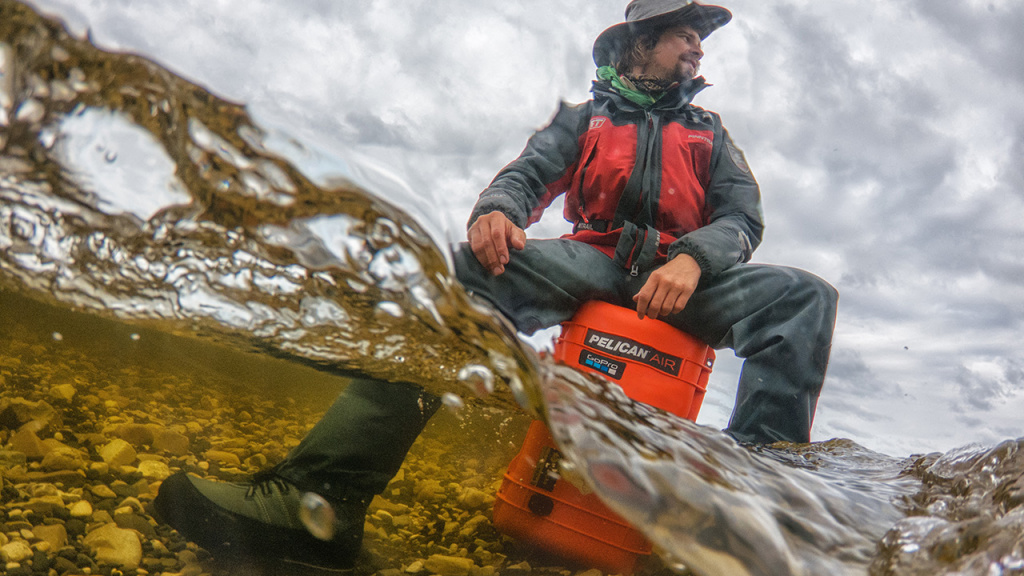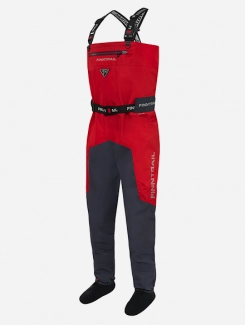How Do Waders and Wading Boots Work? Spoiler: Together Only
Bootfoot waders come in one piece with the boots attached. No choices involved there. But with stockingfoot waders, you get to purchase separate wading boots that will fit more comfortably to your feet and provide better protection. This extra decision can lead people to ask questions. Why do we need wading boots specifically? Can I use my hiking boots or any rubber boots? This post will explain what waders do to help you make an informed purchase.

How Do Waders and Wading Boots Work?
Stockingfoot waders are so named because they feature the wader portion that covers your body and neoprene booties that are hermetically sealed to keep your feet dry. They are designed to be paired with wading boots. The boots fit perfectly into the groove formed at the top of the socks to further keep water from entering your waders. This is the best way to guarantee your waders are 100% waterproof.

The Mysteries of Wading Boots
Most of us immediately assume that the purpose of wading boots is to keep our feet dry. Wrong. That’s what neoprene socks are for. Wading boots are unusual animals designed to serve several purposes specific to riding in water and mud. They offer ankle support, excellent traction in muddy and slippery conditions, and protection from punctures, abrasions, and impacts.
Wading boots are made with strategic holes in the sides, also known as drain holes. What’s their task? When riding your ATV in wet environments, it's common for water, mud, and sand to enter the boots through the top or other openings. This can cause the boots to become heavy and uncomfortable or lead to even dangerous situations, making it difficult to keep your footing on the ATV or on the ground.
The drain holes on the wading boots allow water to flow out of the boots, preventing your feet from becoming waterlogged and heavy. This also helps prevent the buildup of sand or other debris that can accumulate inside the boot and make it difficult to walk or ride.
The holes also allow air to circulate inside the boots, which can help prevent the growth of bacteria and fungus that can cause foot problems.

Can You Wear Wading Boots Without Waders?
Yes, you can wear wading boots without waders, but it's not the most comfortable or practical option, since you are not protected from the water. Let’s imagine several scenarios. If you try to wear just wading boots, your feet will not be dry at all. Wading boots alone don’t keep your feet dry. They are specifically designed to be worn with waders and create a watertight seal for your legs and feet.
Still, you may wear wading boots with separate neoprene socks, this will provide spotty protection for the shallowest of streams. This grim outlook for the pairing comes from the likelihood of splashes, surprise depths, and potential sock slippage.

Can You Wear Waders with Common Footwear?
To explain this, we need to go back to how to wear waders and boots. Waders are designed to be worn with wool or polyester ankle-length socks against your feet, the neoprene “sock” above that, and with wading boots on the outside. For anticipated dryness, comfort, protection, and functionality, this is the combination you need.
It can be tempting to consider using hiking boots, rubber boots, or water shoes you already own. While all of these options will tick off at least one of the same boxes as wading boots, they will be greatly lacking in other areas.
Rubber boots will fit loosely leading to discomfort and potential boot loss. If you get in water or mud that is anywhere near the height of the boot or experience splashes, you will get water or mud inside your boot which may compromise your waterproofing, weigh you down, and potentially result in boot loss. You will not have sufficient grip underwater, in mud, or on your ATV, and you can be knocked off your feet in moving water.
Water shoes might help with grip and staying upright, depending on their design, but they will offer little protection for punctures, abrasions, and impacts and may easily slide off your feet.
Both rubber boots and water shoes will probably not provide ankle support.
How about hiking boots? They’ll provide ankle support, have great grip, and are often waterproof. You probably already have a pair or two. So, can you wear hiking boots with waders?
There are several things to consider about using hiking boots instead of waders. For one, they offer excellent grip on a wide variety of rugged terrain, but they are not designed to maintain traction in underwater and slippery conditions. They are also designed to withstand some water. When you’re hiking and enjoying the outdoors, you may walk in some marshy areas or encounter wet conditions, but that’s not the same thing as spending lengths of time submerged underwater. These boots may still allow water to enter. This will weigh you down and could allow water to get inside from the legs of your waders because they won’t offer the additional seal.
They will also wear out much faster, so you’ll quickly be replacing those hiking hoots. Hiking boots are also heavier than wading boots even under the best of conditions, so they’ll wear you out in the water and on your ATV. They’ll also simply become uncomfortable. They aren’t designed to get wet inside, so if they do, they may fit in some very undesirable ways.

Why Wading Boots for Stockingfoot Waders
So, you can technically pair any shoe with stockingfoot waders, but that doesn’t mean you’ll stay dry, comfortable, or safe, and that doesn’t sound like a fun time.
Wading boots are carefully designed for underwater trials. They:
- are made of materials that will remain durable for years even when submerged for long periods.
- contain strategic holes that allow water to flow through the shoes and keep you upright.
- maintain excellent traction in the muddy, sandy, and slippery environments you will be walking on.
- will protect your feet from injury.
- are comfortable when worn underwater.
- are lightweight even underwater.
ATV wading boots are specifically designed to meet the needs listed above as well as to:
- fit and provide traction on ATV footpegs.
- have mud-free soles that make them easy to clean.
- are lightweight enough to not wear you out on long ATV rides.
- pair with stockingfoot waders that are the most comfortable and durable for off-roading.

Takeaways
Every sport requires unique gear for performance, comfort, and safety. You should always buy the right gear for the sport you’re enjoying. Stockingfoot waders with wading boots are the specific gear designed for mudding and water fun while off-roading.









